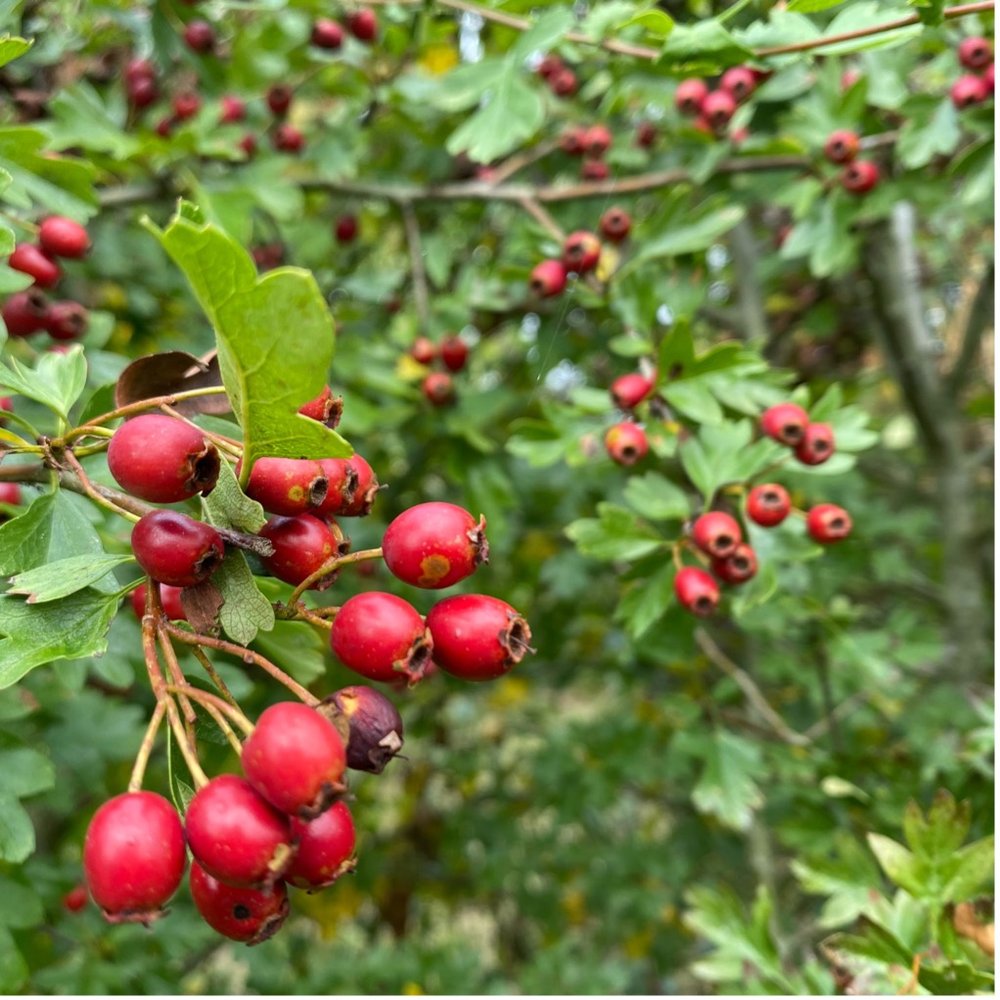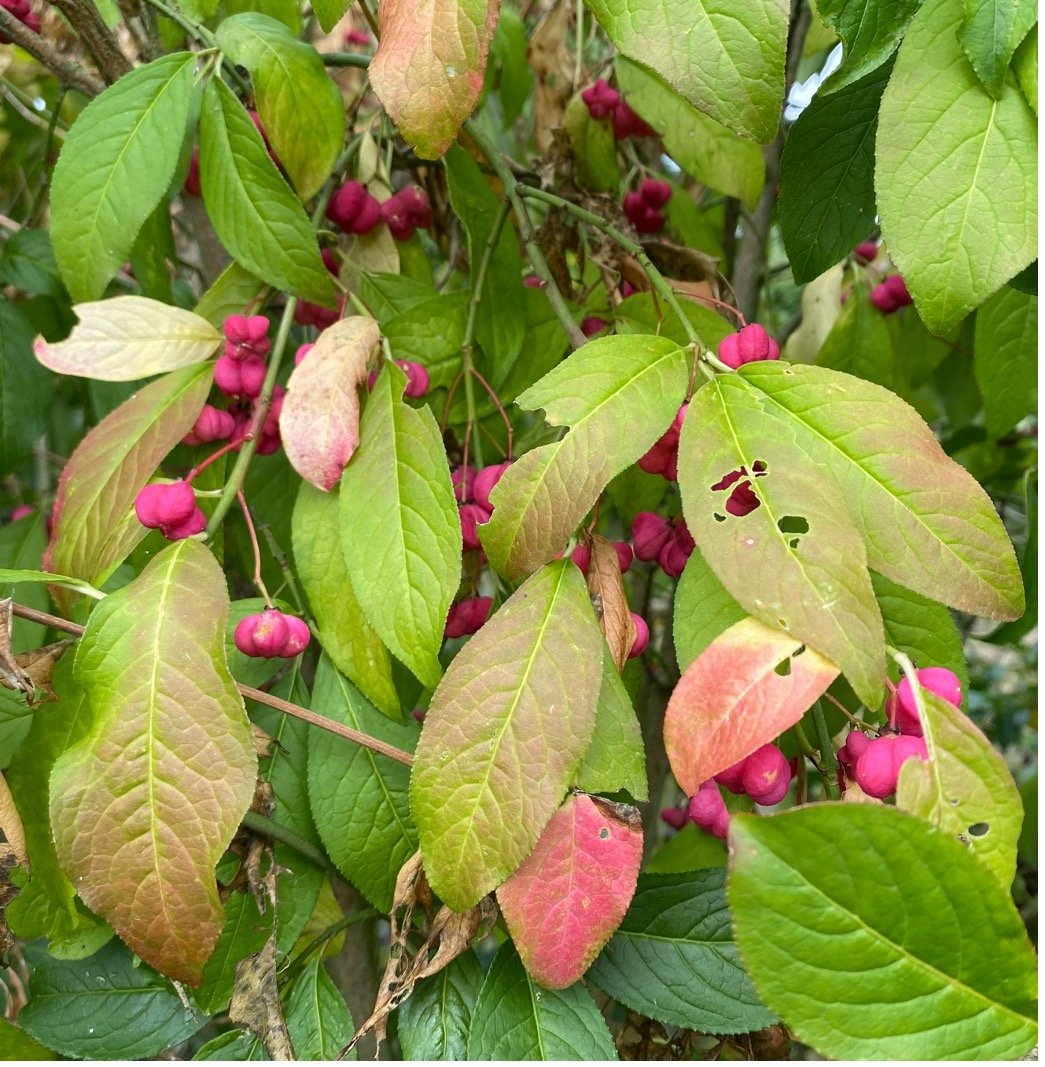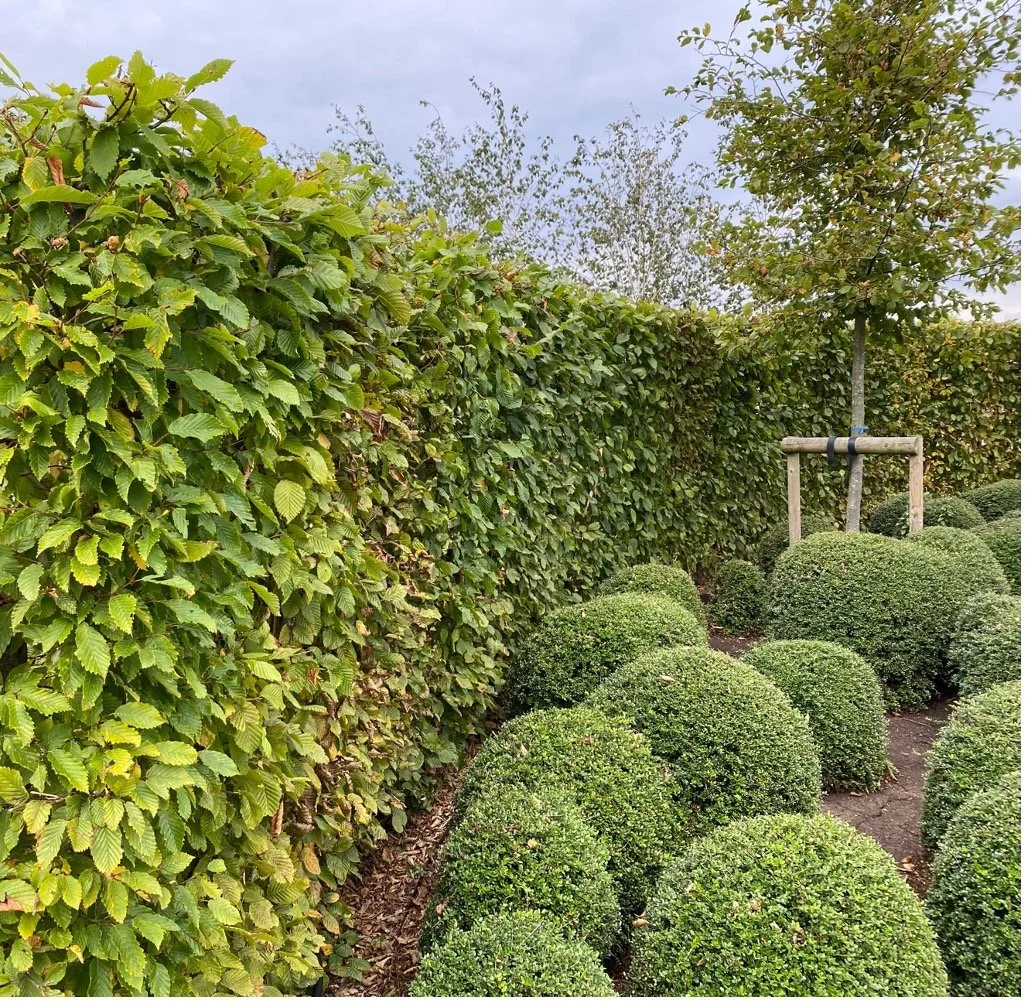
5 of the best… British hedging plants
Lesley Ann SandbachShare

‘Good fences make good neighbors’ is a much-quoted line by the American poet, Robert Frost, one of my favourite twentieth century poets. And how right he was!
I am a great fan of native hedgerows and think they are the perfect complement to a country garden. A quick and cheap way to enclose a long boundary, they offer a safe nesting site for birds (some varieties have quite thick thorns when mature) as well as food in the form of berries and nuts. I’m going to share my five favourite plants for a great mixed hedge that’s visually pleasing, easy to grow and maintain, and a great home for wildlife. I hope it gives you some good ideas to take forward.
1. Crateagus
Also known as hawthorn, May blossom, quickthorn, thornapple or hawberry. It’s a strongly growing shrub or small tree that produces wonderful white blossom in spring (remember the saying: ‘Ne’er cast a clout til May be out’ – is it the flower or the month?) and red berries (haws) in the autumn
2. Prunus spinosa
Otherwise known as blackthorn or sloe. As its name suggests, the wood of this shrub is a dusky black. In early spring, well before the hawthorn, its bare stems produce a profusion of delicate white blossoms with lovely red anthers. In September, the dusty blue/black fruits hang on as the branches lose their leaves and immediately make me think of winter days and sloe gin after country walks! One word of warning: do not plant these as hedges behind a border – sloes produce runners and in no time you will have small sloe bushes popping up among the roses!
3. Euonymous Europaeus
Spindle berry – an enormous family of about 130 different species; the wood of some species was used to make spindles for spinning wheels. The flowers are insignificant and the leaves in summer unremarkable but in autumn the shrubs produce a dazzling display of bright pink berries with orange seeds (NOT edible) and leaf colour that make them worthy of their place in the hedgerow.
4. Corylus
More commonly known as hazel, those yellow catkins in February are hard to miss. The hazel is another strong-grower and is often coppiced for pea and bean sticks. It is a good cover plant for a hedgerow, giving plenty of shelter to birds with its large leaves and, if the squirrels don’t get there first, a small crop of delicate, milky nuts – entirely different from the Kentish cobs we crack at Christmas.
5. Cornus
Dogwood is another large family of shrubs that can fire the winter garden with its glowing stems. The shrubs occasionally produce clusters of black berries but the leaf colour as September fades to October is well worth the wait. The dogwood is fast-growing and gives bulk and bird-shelter to the hedge. Its main glory comes with its autumn leaves.
A few extra tips
Plant hedging as whips (seedlings of up to 1m high); don’t be too regular about it, just mix them up as they come to hand; keep them free of weeds and watered for the first year and they will grow away to provide a thick hedge within four years.
If, like us, you are too impatient to wait for years for your some of your hedges to grow, you might think of taking a short-cut by planting pre-grown hornbeam hedges. Hornbeam is my favourite ‘domesticated’ hedging material. I am not sure why I prefer it to beech but it seems to shed less foliage in autumn and has the same searing early green that gladdens the eyes in the spring.
We go to Trevor at Hampshire Hedges for our container-grown hedging. He is always available on the end of the phone and is happy to set aside specific orders – this is the third season we have ordered from him.
So there we are. My 5 favourite hedging plants. Which one will you try?





